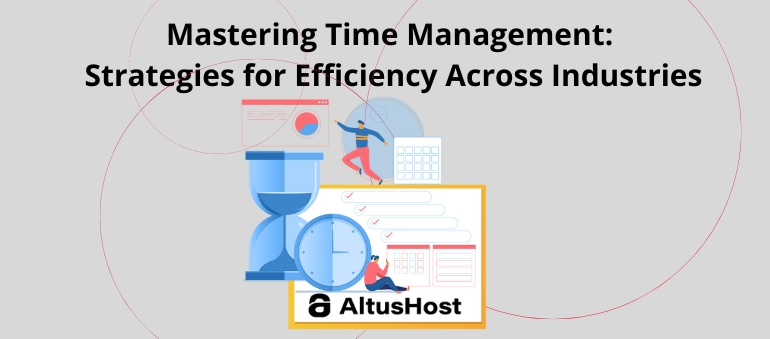In today’s fast-paced world, mastering the art of time management stands as one of the most crucial skills we can cultivate. Time, as our most precious non-renewable resource, underpins every aspect of our lives. While money can be earned and spent, time flows inexorably forward, making its effective management paramount.
True time management isn’t solely about maximizing productivity; it’s about intentional and efficient use of our time. It’s about aligning our actions with our priorities and goals, ensuring that every moment counts.
In this guide, we delve into various time management methods renowned for their effectiveness. These methods transcend job titles and industries, offering valuable insights for individuals seeking to optimize their time utilization.
Furthermore, we provide a complimentary year overview template and demonstrate its application in crafting weekly and daily schedules using Google Calendar. By leveraging these tools and techniques, you can take proactive steps toward enhancing your productivity and achieving your objectives.
There are several time management and productivity methods. Here are a few:
- Eisenhower Matrix: This method helps you prioritize tasks based on their urgency and importance, dividing them into four quadrants: urgent and important, important but not urgent, urgent but not important, and neither urgent nor important.
- Getting Things Done (GTD): Developed by David Allen, GTD is a method for organizing tasks into lists and categories, focusing on clearing your mind and increasing productivity by capturing, clarifying, organizing, reflecting, and engaging with tasks.
- The 80/20 Rule (Pareto Principle): This principle suggests that 80% of your results come from 20% of your efforts. By identifying and focusing on the most important tasks, you can increase your productivity.
- Time Blocking: This method involves scheduling specific blocks of time for different tasks or activities throughout your day. It helps you allocate time effectively and ensures that you dedicate focused time to each task.
- Eat That Frog: Popularized by Brian Tracy, this method encourages tackling your most challenging or important task first thing in the morning, which sets a productive tone for the rest of the day.
- The Ivy Lee Method: This simple method involves listing your top six tasks for the next day in order of priority and then focusing solely on completing those tasks one at a time.
- The Two-Minute Rule: If a task takes less than two minutes to complete, do it immediately. This method helps prevent small tasks from piling up and consuming more time later.
- Time Management Matrix: Similar to the Eisenhower Matrix, this method categorizes tasks based on urgency and importance but adds a focus on eliminating, automating, delegating, and concentrating on tasks accordingly.
- Bullet journaling is a flexible organizational system that can be adapted to fit individual needs.Bullet journaling is a versatile and customizable organization system that combines elements of a planner, diary, and to-do list. Created by Ryder Carroll, it’s designed to help individuals track their past, organize their present, and plan for the future in a way that suits their unique needs and preferences.At its core, bullet journaling revolves around the use of rapid logging—a method of jotting down tasks, events, notes, and ideas using concise bullet points. This simple yet effective system allows users to capture information quickly and efficiently.
Based on a fusion of the methods outlined earlier, we’ve devised three organizational models. These models enable you to view and manage your entire year, before breaking it down into weekly and daily schedules.
Year overview
In the fast-paced world, staying organized is key to success. Many of us juggle multiple projects, deadlines, and commitments on a daily basis, making it essential to have effective tools for time management and planning. As members deeply entrenched in the web hosting industry, we understand the challenges of keeping track of everything while maintaining productivity and focus.
Like many of us, we’ve explored various methods and tools to streamline our organization system and optimize our workflow. However, it wasn’t until we discovered the concept of a yearly overview that we truly experienced a breakthrough in our approach to time management.
The idea behind a yearly overview is simple yet powerful: you divide the entire year into twelve columns representing each month, with rows for each date from one to thirty-one. This creates a grid of 366 blocks, offering a comprehensive visual representation of the entire year at a glance.
When we first implemented this technique using the bullet journal method, we were amazed at the insight and clarity it provided into the structure of our year. It allowed us to identify busy periods well in advance, spot patterns in our schedule, and allocate our time more effectively.
What struck us most was how rarely we encounter this perspective in our day-to-day lives. While digital calendars offer weekly or monthly views, and physical annual calendars require flipping through pages, neither option provides the same panoramic view of the year ahead.
Driven by a desire for greater digital organization, we set out to integrate a digital yearly overview into our workflow. Through spreadsheets and careful planning, we created a digital representation of our year that allowed us to visualize our schedule in a format that was both intuitive and visually engaging.
The impact was immediate and profound. Suddenly, we could see our year laid out before us, with holidays, weekends, and workdays clearly marked. This newfound clarity empowered us to make more informed decisions, prioritize our tasks effectively, and achieve a better work-life balance.
Today, the digital yearly overview has become an indispensable tool in our arsenal, and we encourage many of you to explore its benefits. By incorporating this simple yet powerful technique into our organization systems, we can gain greater insight into our schedules, boost productivity, and ultimately, achieve greater success in our endeavors
At the bottom of this blog, we’ve provided a downloadable sheet for this year’s yearly overview that you can easily import into your Excel table. We believe in making practical tools accessible to our community, and we hope this resource will streamline your organizational efforts and enhance your productivity. Feel free to download the sheet and start visualizing your year with clarity and insight.
Weekly planning
In addition to the yearly overview sheet, we’ll also provide a screenshot example of a weekly schedule. We understand the importance of practical examples in visualizing concepts, and we wanted to offer a tangible representation of how the yearly overview can be translated into a weekly schedule.
Rather than introducing new and unfamiliar apps, we opted to showcase the example using Google Sheets, a platform many of us are already familiar with. This ensures accessibility and ease of use for our community.
Fundamentally, the concept of time remains constant for everyone—there are 24 hours in a day and 168 hours in a week. Assuming an average of 8 hours of sleep each night, we’re left with approximately 112 hours in a given week to allocate to various tasks and activities. By recognizing this universal truth, we can better center our tasks and priorities, ensuring that our time is used effectively and efficiently.
We encourage you to explore the provided insights and incorporate them into your own organizational strategies. Whether you’re a seasoned professional or just starting your journey towards better time management, these insights can help you make the most of your available time and achieve your goals with greater clarity and focus.
It’s crucial to lay out everything in your schedule so that you have a clear understanding of how your time is allocated and what time is left to play with. By labeling waking hours, reading hours, lunch and dinner times, as well as weekly regular meetings, you create a comprehensive overview of your week’s activities. This level of detail not only ensures that you’re aware of your commitments but also allows you to identify pockets of time that can be utilized for other tasks or leisure activities. Whether it’s carving out dedicated time for personal development, ensuring you have adequate breaks throughout the day, or staying on top of recurring appointments, a well-structured schedule helps you maintain balance and productivity in your daily life.
Additionally, leaving open windows in your schedule allows you to quickly organize spontaneous activities, such as spending time with friends or accommodating unexpected visits. By maintaining flexibility in your schedule, you’re better equipped to seize opportunities for social interactions and leisure activities without feeling overwhelmed by a rigid structure. This flexibility not only fosters spontaneity and enjoyment but also ensures that you can strike a healthy balance between work, socializing, and personal time. So, while it’s essential to have a structured schedule, leaving room for spontaneity adds an element of excitement and adaptability to your daily routine.
Daily schedule
When it comes to daily planning, it’s important to prioritize the three most important aspects of your life. For many people, these aspects often revolve around health, relationships, and work. By identifying these key areas, you can structure your day to ensure that you’re dedicating time and energy to what matters most to you.
Having three main goals that revolve around these aspects can be incredibly helpful. For example, you might set a goal to exercise for at least 30 minutes each day to prioritize your health. Another goal could involve spending quality time with loved ones, whether it’s through regular phone calls, dinner dates, or simply enjoying each other’s company. Lastly, setting work-related goals, such as completing a specific project or tackling important tasks, can help you stay focused and productive throughout the day.
By aligning your daily activities with these three main goals, you create a framework that guides your actions and priorities. This approach not only ensures that you’re making progress in areas that are meaningful to you but also provides a sense of balance and fulfillment in your daily life. So, as you plan your day, remember to keep these three main aspects in mind and structure your activities around them to maximize your productivity and well-being.
Conclusion
In conclusion, mastering time management is essential for success in any industry. Throughout this guide, we’ve explored various time management methods and provided practical insights applicable across different job positions and sectors. From the Eisenhower Matrix to the Pomodoro Technique, each method offers valuable strategies for optimizing productivity and achieving goals.
Additionally, we’ve offered complimentary tools such as a year overview template and demonstrated its application in crafting weekly and daily schedules using Google Calendar. By leveraging these resources, individuals can proactively manage their time and enhance their efficiency.
At Altushost, we recognize the significance of efficient time management in the digital landscape. As a leading web hosting provider, we’re committed to empowering our community with the knowledge and tools they need to thrive. We believe that by mastering time management, individuals can unlock their full potential and excel in their endeavors.
Thank you for joining us on this journey towards mastering time management. We hope the insights shared in this guide will inspire you to take control of your time and achieve your goals with clarity and focus.
By subscribing, individuals not only gain access to our newsletter updates but also receive a complimentary yearly overview time management file. Upon downloading the Excel file, users can seamlessly integrate it into their existing offline Excel sheets or upload it to their Google Excel Drive for immediate use.
We believe this resource will significantly enhance productivity and time management efficiency for our valued readers. Thank you for being a part of our community, and we look forward to continually providing valuable insights and resources to support your endeavors.
Subscribe today to stay informed and receive your yearly overview time management file.



